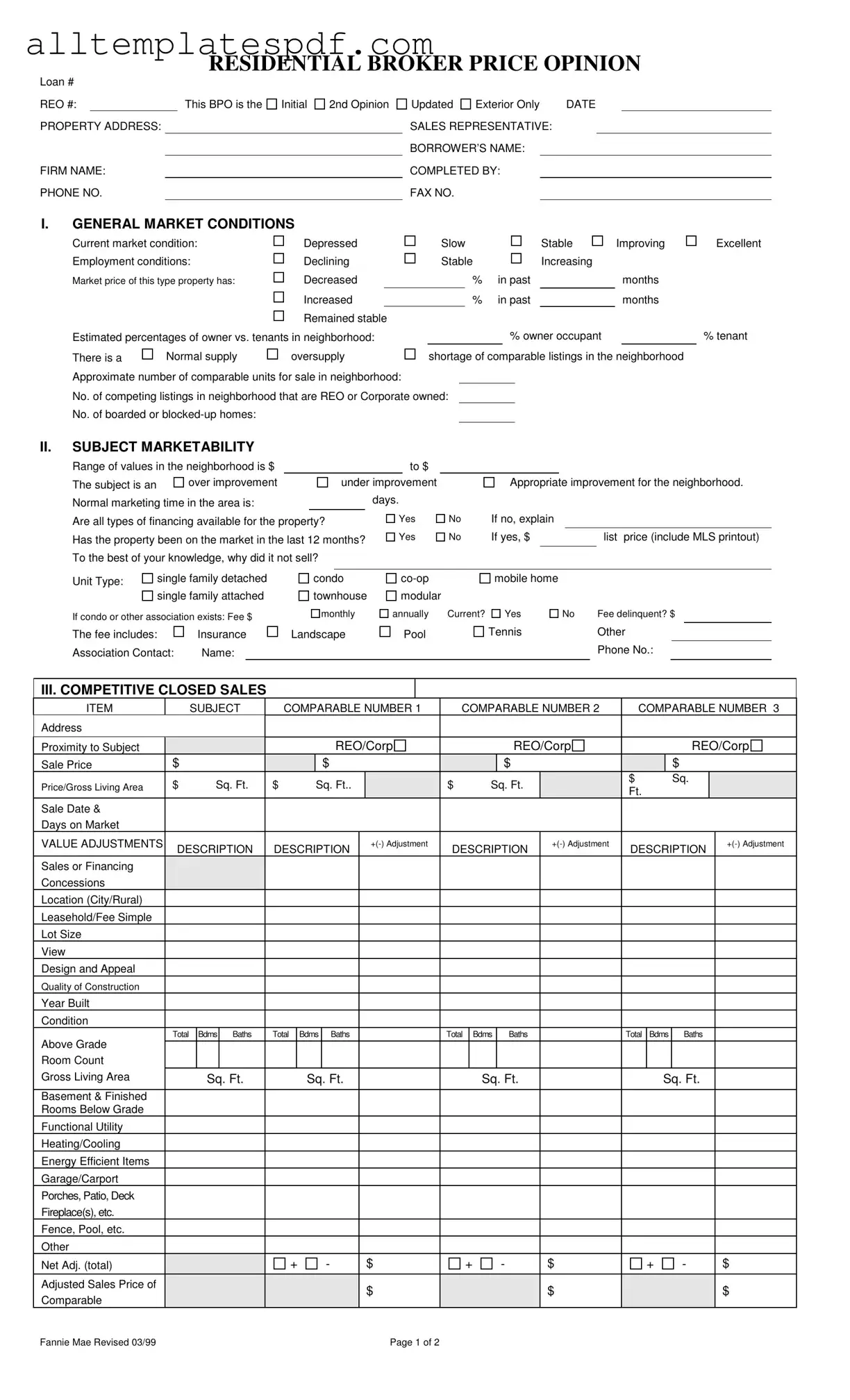Fill Out a Valid Broker Price Opinion Form
A Broker Price Opinion (BPO) is a professional assessment of a property's market value, typically used by lenders to determine the price for a property in a real estate transaction. This form provides crucial information about the property’s condition, market trends, and comparable sales in the area. For a detailed evaluation of your property, please fill out the form by clicking the button below.
Open Editor
